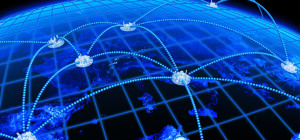From interior decorating pieces to telecommunications, fiber optics are a real wonder. Everything about this material and how it is used in a variety of applications is beneficial and good. Thanks to optical fibers, internet connections are faster than ever, we get emails in a second, and we can have HD cable connection. Truly, modern life is way easier, faster and reliable due to the working powers of optical fibers.
But only a few are aware of its nature, more so how it works. Most people are not familiar with this technology, hence learning about the intricacies of how it works, and other things geeky about fiber optics could be boring.
Learning about it could be interesting and mind-blowing, however. Just as how esoteric fiber optics can be, it abounds with cool information about its history and its nature.
This infographic makes every fact about fiber optic interesting and cool. Here is a rundown of 8 mind-blowing facts about fiber optics that you’ll surely want to know.

What is Fiber Optics?
Also known as ‘Optical Fiber’, this cable contains strands of fiber that can transmit light beams from end to end. Fiber optics is made out of thin flexible fiber strands of glass.
Unlike copper cables that transmit data through electrical signals, fiber optics uses the on and off light. This is especially useful and efficient for data transfer as data is binary and can leverage on and off light to transfer data.
8 Mind Blowing Facts about Fiber Optics
- Alexander Graham Bell sent the first wireless message using light by means of his invention called Photophone. This invention allows the transmission of sound on a beam of light. Photophone operates like a telephone, only it uses the light to transmit sound while telephone uses electricity.
Photophone is considered by Alexander as his most important invention.
- But it was in April 22, 1977, that the first telephone message through fiber optics was sent at a throughput of 6Mbit per second. GTE, the predecessor of Verizon, did this breakthrough in Long Beach, California.
- 1980 Winter Olympics in Lake Placid New York is the first fiber optic television transmission, ever.
- Although not entirely Fiber optics, submarine communications cable (cables underwater) carry about 99% of international data in this planet over hundreds of thousands of miles of cables laid by specialized cable-laying ships.
- Sending and receiving signals through optical fibers is as fast as 99.7% of light. Nearly as fast as the value of C in E=mc^2. to better grasp how fast this is, the current record for the speed of fiber optics is 15.5 Terabits per second in a distance of 7,000km of cable. However, for practical use, the current record for the fastest data transfer is 64 Gbps over a cable 57 meters long. Meanwhile, NEC and Corning Inc. holds another record claiming to have a transfer speed of 1.05 Pbits/s that took place on a single long-haul 7200km cable.
What we are sure, though, is that Fiber Optics are really fast.
- Fiber Optics are Invincible. As it transmits light, fiber optic cables do not overheat and are not affected by rain, wind and other weather factors. It is simply more invincible than copper.
- Fiber Optics are Strong. Research shows that fiber optics is stronger than copper. And cables used in premises can endure over 200 pounds of pulling tension. That is way stronger than the thickest string of an electric bass that can only endure 50 pounds of pulling tension at most.
- Shark Proof Optic Fiber Cables
Since cross-border fiber optic cables are underwater, sharks sometimes attack fiber optic cables. To prevent damage, Google wraps its cables with Kevlar material which is 5 times stronger than steel proportional to weight.
However new fiber optics might appear to many, the history of its use and its predecessors are already decades, even centuries old. Sure enough, the benefits of fiber optics are mind blowing. It could stand as one of the most important inventions of our time. Thus monitoring fiber optic networks is a real business for organizations, lest email services and the internet will get interrupted.







